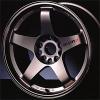Make My Gt30r Reach Full Boost Earlier....
Announcements
-
Similar Content
-
Latest Posts
-
Ha ha, yeah, I've had one following me around in my parts boxes since about 2007 I believe. Just a little iddy bit hole drilled in the one I have to let it vent out once pressure was removed from the engine side. Still no idea what I'd put it on, ha ha.
-
Just read this... Just a little bit of a wild one! Do you think the driver was testing out a new feature/device for how to lose the cops in a high speed chase? I also suspect, if the box has a road sweeper that does magnetic metal pick up, he does a LOT of work in the machining industry. Which is what most of that looked like, machining chips from a mill or lathe. And I bet they're RAZOR sharp! And from an environmental perspective they really do need to actually collect all of those little pieces too. I wonder how many people still cop flat tires over the coming months on that road? As for insurance company, yeah, it'd be interesting to hear what they say to the owner. But realistically, he's right, that "It's his fault". In the way that, it was his truck that spilled it, so they need to clean it up. However, neither he, nor his insurance company may bear the end cost if they do an investigation and find out it was caused by someone elses negligence (And they know who)...
-
Yeah, no matter what bad things people can say about Julian from Autospeed, he at least was capable of thinking and his inclusion of a check/relief valve in the plumbing for the Audi boost controller, that I made a copy of and used for years**, completely eradicated that problem. **It's still lying on my workbench where I put it about, um, 18 years ago and have never found a home for it!
-
I didn't actually know this! I've seen photos of the H1, mainly outside shots, and they just look "different". I guess there'd be a few little changes like nicer rims, and probably the fact they have nicer looking paint with some depth and shine, which will make any vehicles body look different to the very flat colours of the defence force. I've watched the guys on GHPC convert their Humvee to LS1, and they've done some really nice front shock upgrade. I'm waiting for the next video on it with the rear end done. I can't remember if they've already done it, or I dreamed it, but I believe they're also supercharging theres. They will be in the future doing proper long travel suspension too. If you ditch out your big V8, as rubbish as it must be, send it to my place. I'll let the unreliable V8 motor and box be here. I just like V8s... So I'll find something to do with it... Even if that something is just taking up valuable space in the yard. I might have something Skyline I can send back in payment... Or even Ford Barra motors (From memory you're in Canada yeah?) So you can then play with the legendary Aussie 4L version of an RB... Except they don't have that distinctive random miss at idle like the RB25 does.
-
Or you mean the age old problem of early 2000's manual boost tees, where they never let the pressure out of the line between the boost tee, and the waste gate, so after your first trip on boost, the damn wastegate liked to stay open and be laggy on gear change?
-







Recommended Posts
Create an account or sign in to comment
You need to be a member in order to leave a comment
Create an account
Sign up for a new account in our community. It's easy!
Register a new accountSign in
Already have an account? Sign in here.
Sign In Now